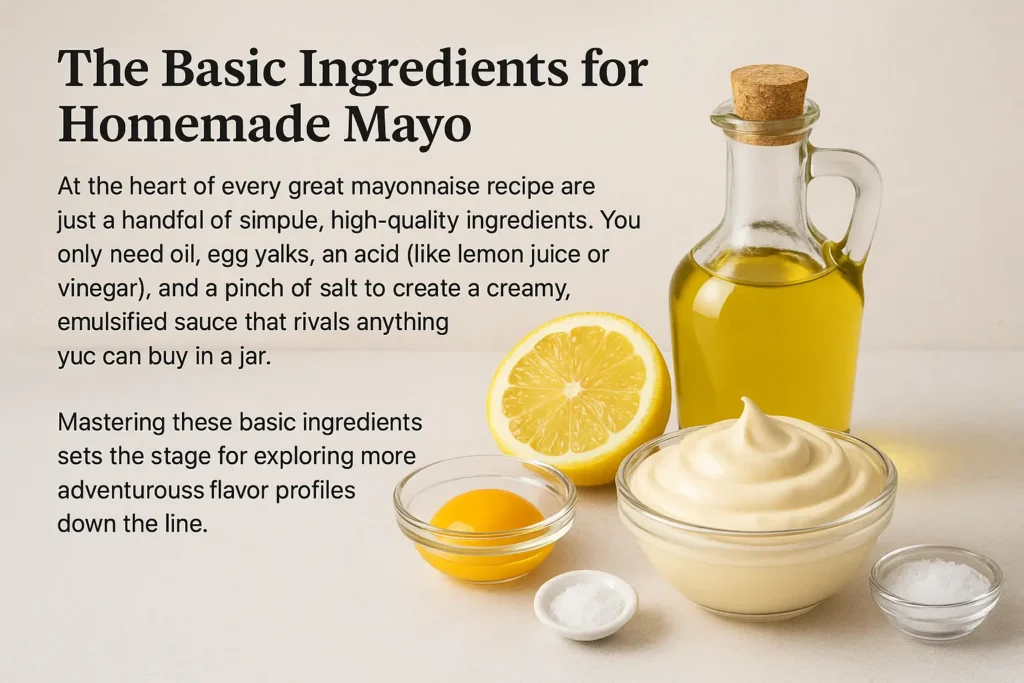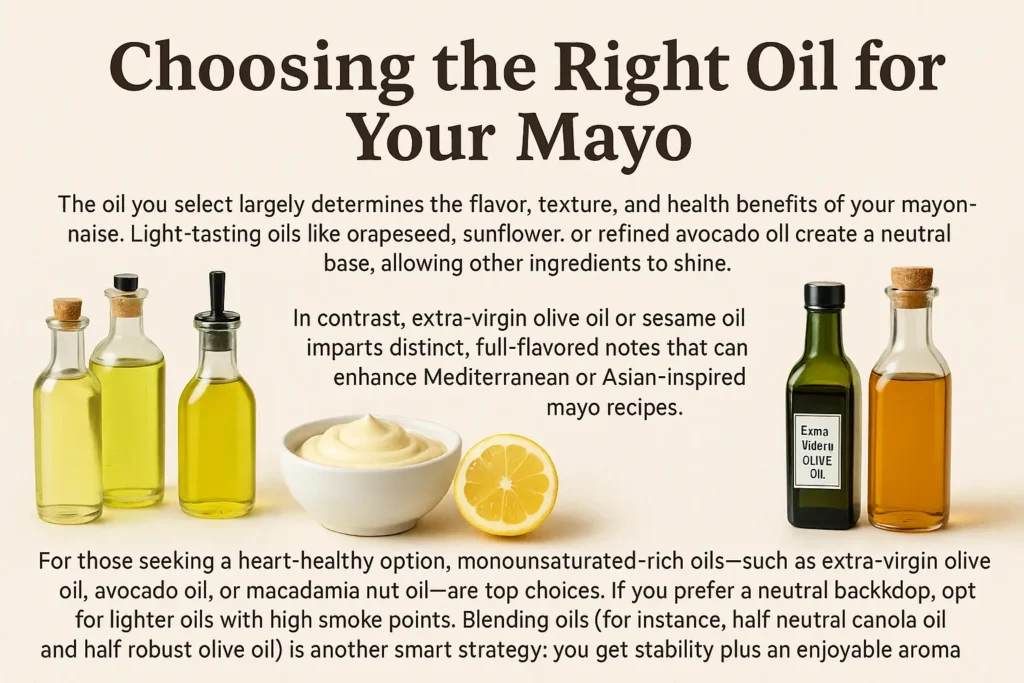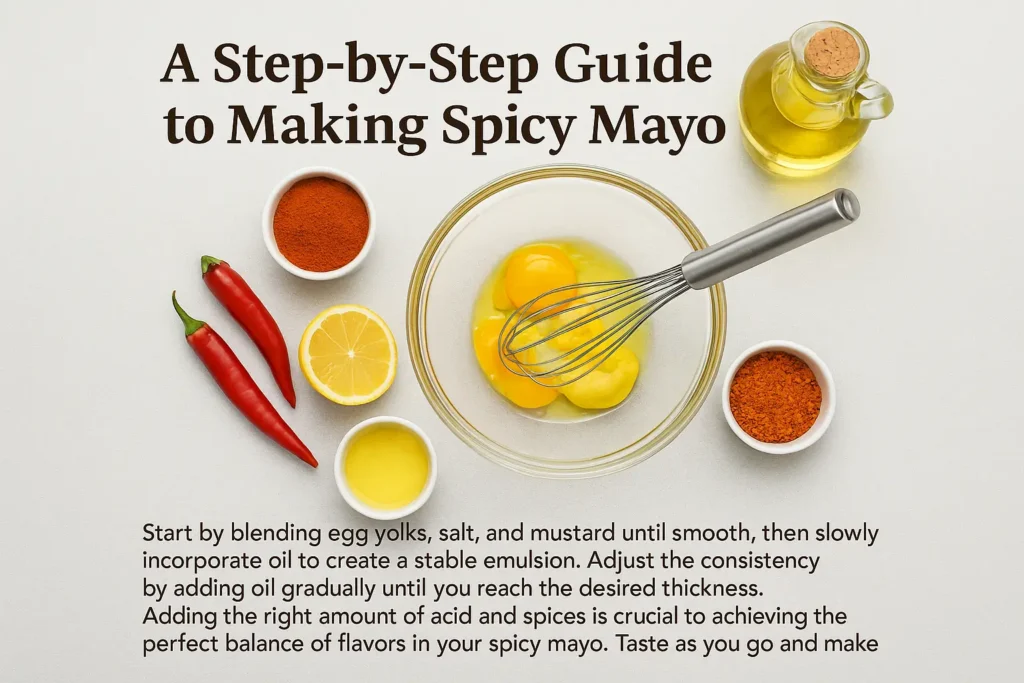Imagine a world where your jar of mayonnaise isn't just another bland condiment lining your fridge shelf, but rather a bespoke creation showcasing your culinary flair. The beauty of homemade mayo recipes is akin to crafting your own masterpiece, personalized to your palate's unique preferences and dietary needs. Gone are the days of settling for overly processed, store-bought varieties that lack that certain je ne sais quoi. Instead, you can indulge in the satisfaction of whipping up a batch tailored just for you, with the freshest of ingredients and flavors that pop.
Did you know that commercially produced mayonnaise can contain over 10 grams of fat per tablespoon? That's a shocking statistic for something many of us use liberally in our meals. With homemade mayonnaise recipes, not only can you control the ingredients, ensuring they're wholesome and fresh, but you also have the power to make healthier choices without compromising on taste. Whether you're looking to experiment with exotic spices or prefer a classic take with a hint of lemon, these recipes offer endless possibilities to elevate your culinary creations. So, grab your whisk and let's dive into the art of making mayonnaise from scratch.
The Basic Mayonnaise Ingredients for Homemade Mayo
At the heart of every great mayonnaise recipe are just a handful of simple, high-quality ingredients. You only need oil, egg yolks, an acid (like lemon juice or vinegar), and a pinch of salt to create a creamy, emulsified sauce that rivals anything you can buy in a jar. The magic happens when you whisk these components together, coaxing fat and water molecules to form a stable emulsion. Mastering these basic ingredients sets the stage for exploring more adventurous flavor profiles down the line.

Egg yolks act as your emulsifier, containing lecithin that helps bind oil and water. Cold-pressed or light-tasting oils provide the fat component, while fresh lemon-juice or distilled vinegar brings brightness and tang. A touch of salt and, if you like, a hint of sugar round out the basic seasoning. Once you feel comfortable with the core recipe, you can experiment by adding mustard for extra stability, garlic for pungent notes, or even a dash of hot sauce for heat. Understanding these fundamental building blocks is the first step toward crafting perfect way to make mayonnaise every time.
Health Benefits of Homemade Mayo
Unlike many store-bought brands that rely on preservatives, stabilizers, and refined oils, home made mayonnaise lets you decide exactly what goes into your condiment. By choosing high-quality, minimally processed oils—such as extra-virgin olive oil or avocado oil—you’re adding healthy monounsaturated fats to your diet. These “good” fats can help support heart health, regulate cholesterol levels, and promote better nutrient absorption.

Additionally, easy home-made mayonnaise contains fresh egg yolks, which are rich in choline, a nutrient essential for brain function and liver health. When made with fresh lemon-juice or apple cider vinegar, you also get a small dose of vitamin C and beneficial plant compounds. Overall, crafting your own mayo not only enhances flavor but also gives you a healthier alternative to overly processed commercial spreads, offering a better nutritional profile and cleaner ingredient list.
Choosing the Right Oil for Your Mayo
The oil you select largely determines the flavor, texture, and health benefits of your mayonnaise. Light-tasting oils like grapeseed, sunflower, or refined avocado oil create a neutral base, allowing other ingredients to shine. In contrast, extra-virgin olive oil or sesame oil imparts distinct, full-flavored notes that can enhance Mediterranean or Asian-inspired mayo recipes.

For those seeking a heart-healthy option, monounsaturated-rich oils—such as extra-virgin olive oil, avocado oil, or macadamia nut oil—are top choices when making for instance olive oil mayonnaise. If you prefer a neutral backdrop, opt for lighter oils with high smoke points. Blending oils (for instance, half neutral canola oil and half robust olive oil) is another smart strategy: you get stability plus an enjoyable aroma and flavor profile without overpowering the mayonnaise.
Eggs: Fresh vs. Pasteurized Options
Fresh, pasture-raised eggs boast superior flavor and richer yolks but carry a slight food-safety risk, especially if served raw. If you’re comfortable sourcing from a trusted local farm and using eggs rapidly, fresh yolks deliver the creamiest mayo with vibrant color. Be sure to wash and crack them with care to minimize contamination.
Pasteurized eggs, on the other hand, eliminate the risk of salmonella while still providing ample lecithin for emulsification. They’re an excellent choice for households with young children, pregnant individuals, or anyone with a weakened immune system. Although pasteurized yolks can be slightly paler and may require a bit more whisking to thicken, they ensure safety without sacrificing too much on taste or texture.
Acid: Adding Zest to Your Mayo
An acid component is essential in mayonnaise, brightening flavors and helping to stabilize the emulsion. Lemon juice gives a fresh, citrusy tang that pairs wonderfully with seafood and sandwiches. Apple cider vinegar offers a milder, fruitier acidity, ideal for slaws and dressings.
Experiment with different vinegars—white wine vinegar for a delicate note, rice vinegar for Asian-inspired mayo, or sherry vinegar for depth. The trick is to add acid gradually, tasting as you go, until your homemade mayo strikes the perfect balance between creaminess and zing.
Seasoning Your Easy Homemade Mayonnaise
Basic salt and pepper are just the beginning when it comes to seasoning your creation. A small amount of Dijon mustard lends stability and a subtle bite, while a pinch of sugar can round out acidity. Garlic powder, onion powder, paprika, or smoked paprika each add their own character, transforming plain mayonnaise into a flavorful spread or dip base.
Don’t be afraid to taste frequently and adjust. Season in layers—start with salt and acid, then introduce additional spices. This method ensures each element shines through without overpowering the creamy foundation, resulting in a well-rounded mayo that elevates every dish it accompanies.
A Step-by-Step Guide to Making Spicy Mayo
Making home-made spicy mayo is surprisingly straightforward once you have the technique down. Begin by placing egg yolks, a pinch of salt, and mustard in a bowl or blender, then whisk until smooth. Next, slowly drizzle in oil while whisking vigorously—this gradual addition is crucial to forming a stable emulsion. Once half the oil is incorporated, you can add it a bit faster until your mayo thickens to the desired consistency.

Finish by whisking in your chosen acid, tasting, and adjusting seasoning. If the mayo is too thick, whisk in a teaspoon of warm water. If it’s too thin, keep stirring; patience is key. In under ten minutes, you’ll have velvety, rich mayonnaise that outshines anything off the shelf.
Making your own spicy mayo at home can truly take your dishes to the next level. The key is to balance the flavors perfectly to create a rich and creamy sauce that complements any meal. By following a few simple steps, you can achieve a restaurant-quality spicy mayo that will enhance the flavors of your favorite dishes.
Start by blending egg yolks, salt, and mustard until smooth, then slowly incorporate oil to create a stable emulsion. Adjust the consistency by adding oil gradually until you reach the desired thickness.
Adding the right amount of acid and spices is crucial to achieving the perfect balance of flavors in your spicy mayo. Taste as you go and make adjustments to suit your preferences. Whether you're using it as a dipping sauce or a sandwich spread, this homemade spicy mayo is sure to impress your taste buds and elevate your culinary creations.
Eggless Mayonnaise Options
For those with egg allergies or concerns, eggless mayonnaise offers a delicious alternative that still provides creamy, tangy satisfaction. Many eggless versions rely on aquafaba (the liquid from a can of chickpeas), which surprisingly mimics egg yolk’s emulsification properties. Simply combine aquafaba, oil, acid, and seasonings, then blend until thick and smooth.
Other eggless approaches use silken tofu, which lends a neutral flavor and sturdy texture. Blend tofu with oil, lemon juice, and salt for a quick, protein-rich mayo. Eggless mayo options open the door to more inclusive Home made Mayo Recipes, ensuring everyone can enjoy a fresh, homemade condiment regardless of dietary restrictions.
Flavored Mayo Variations
Once you master the base, flavored mayonnaises unlock endless creativity. Try garlic aioli by infusing your mayo with minced garlic and a dash of lemon juice or make chipotle mayo with adobo-packed chipotle peppers and a sprinkle of smoked paprika. Curry mayo comes alive with ground turmeric, cumin, and coriander, while pesto mayo blends fresh basil, pine nuts, and Parmesan cheese.
Explore global inspirations: Moroccan harissa mayo, spicy Thai sriracha lime mayo, or tangy Greek tzatziki mayo with cucumber and dill. Each variation requires only a few extra ingredients but delivers a flavor explosion, making your homemade mayo recipes the star accompaniment to fries, sandwiches, and grilled veggies.
Vegan Mayo Recipes
Vegan mayo recipes cater to plant-based lifestyles without skimping on taste or texture. Common bases include aquafaba, soy milk, or cashew cream—each offering a creamy consistency when blended with oil, mustard, vinegar, and seasonings. Aquafaba mayo is light and nearly indistinguishable from egg-based versions, while cashew mayo has a richer, slightly nutty profile.
Whichever base you choose, the process remains similar: blend liquid and seasonings, then slowly stream in oil to create an emulsion. Vegan mayo can be customized just like traditional recipes—add garlic and herbs for a bright aioli or chipotle and lime for a smoky, zesty kick. Embrace these plant-powered alternatives to expand your repertoire of Homemade Mayo Recipes.
Troubleshooting Common Mayonnaise Mishaps
Even experienced home cooks can encounter mayo mishaps. If your emulsion splits or “breaks,” don’t despair. Simply start with a fresh egg yolk in a clean bowl, then very slowly whisk in the broken mayo as if it were oil. The fresh yolk’s lecithin will help re-emulsify the mixture.
Other issues include overly thick mayo—remedy by whisking in a teaspoon or two of warm water until silky. If it’s too thin, continue whisking or add a small amount of additional yolk to build structure. With these troubleshooting tricks, you’ll turn culinary mishaps into learning moments and always end up with perfect mayonnaise.
Storing and Shelf Life of Homemade Mayonnaise
Proper storage extends the safe enjoyment of your homemade mayonnaise. Transfer it to a clean, airtight container and refrigerate immediately. Homemade mayo typically stays fresh for up to one week. Always use a clean spoon to scoop out what you need and avoid cross-contamination.
Because homemade recipes lack preservatives, they won’t last as long as commercial versions. Keep an eye (and nose) out for any changes in texture, color, or aroma. If you notice separation or an off smell, it’s best to discard the batch and whip up a fresh one.
Creative Variations and Flavor Additions
Beyond basic flavor variations, you can get playful with unconventional add-ins. Infuse mayo with truffle oil and grated Parmesan for an indulgent spread, or stir in finely chopped olives and sun-dried tomatoes for a Mediterranean twist. Wasabi powder lends a kick to a sushi-style mayo, while finely minced capers add briny pops of flavor.
For a sweet-savory approach, try maple-mustard mayo: whisk in pure maple syrup and whole grain mustard for a delightful glaze on roasted vegetables or chicken. You can even swirl in pesto or tapenade to create marbled effects that look as impressive as they taste. These creative flavor additions prove that Homemade Mayo Recipes are limited only by your imagination.
Conclusion: Elevate Your Dishes with Homemade Mayo
Homemade mayo recipes transform a simple condiment into a personalized culinary tool. By mastering the basics, experimenting with oils, acids, and seasonings, and exploring vegan or eggless alternatives, you unlock endless possibilities to enhance sandwiches, salads, dips, and more.
Next time you reach for a jar in the supermarket aisle, remember the joy and flavor of crafting your own mayonnaise from scratch. Embrace these tips and variations to bring freshness, quality, and creativity to every dish you serve.


